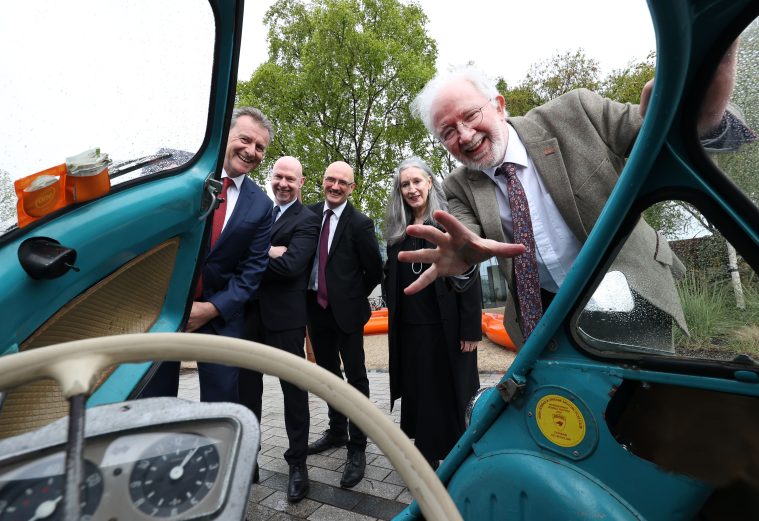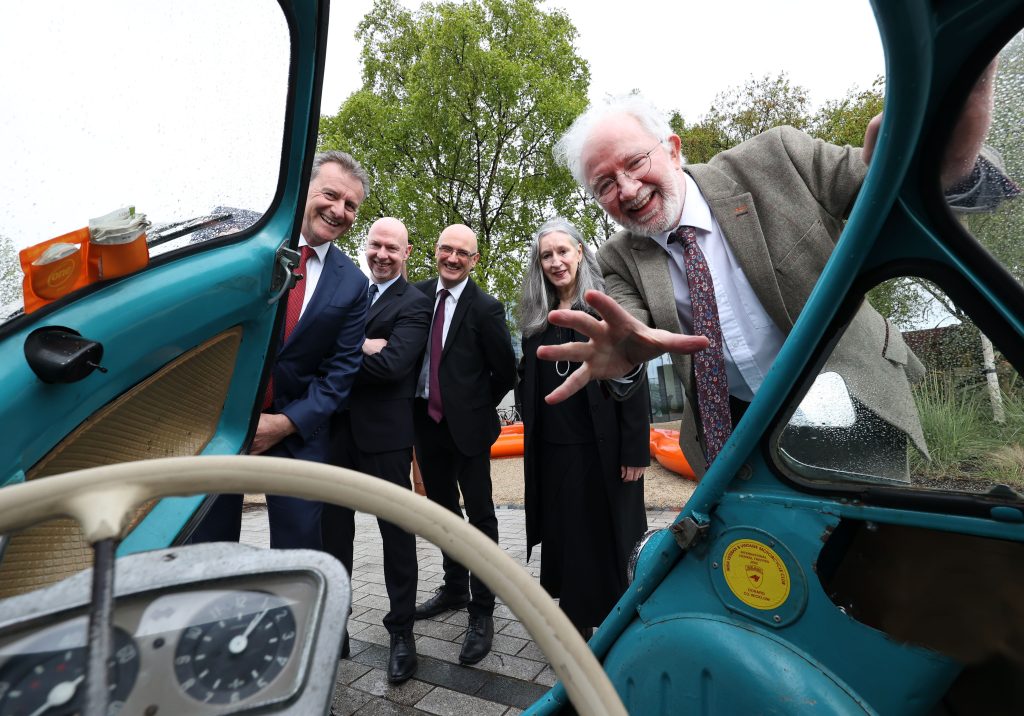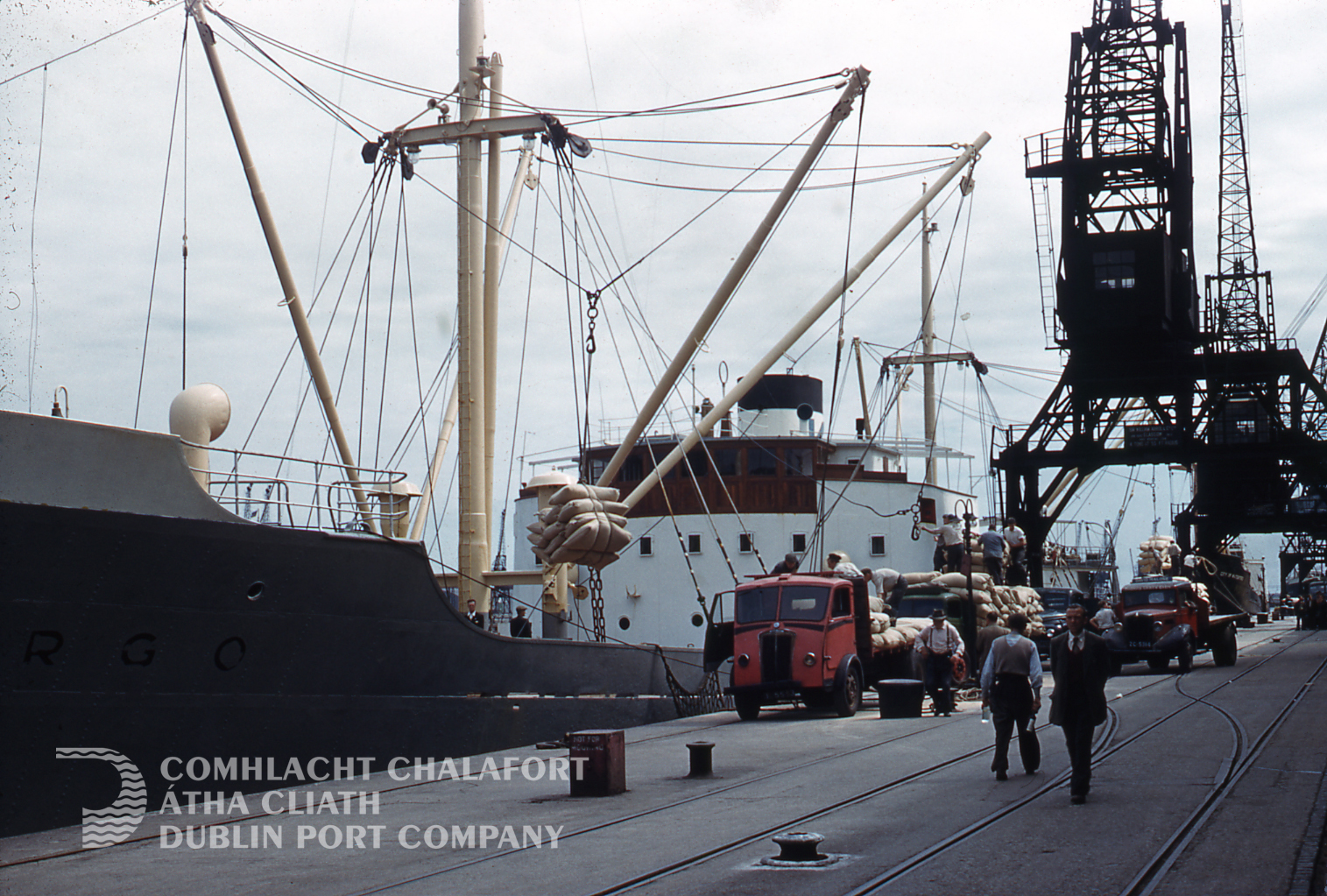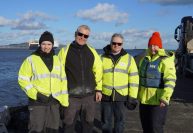‘Layers of Dublin Port’ Mapped for First Time in New Conservation Strategy

Strategy Outlines Port’s Journey to the East
Dublin Port Company (DPC) has mapped its rich natural, industrial and cultural heritage in a new Conservation Strategy, launched today by Minister of State Malcolm Noonan, TD.
The ambitious document maps the layers of Dublin Port, which include findings on the floor of Dublin Bay, discoveries underground from archaeological digs and the industrial history of the built environment still standing on the Dublin Port estate. This is the first time Dublin Port’s heritage has been mapped on this scale in its 300-year history.
A key pillar of the Strategy is Port-City Integration, the framework through which all aspects of Dublin’s maritime heritage, from structures as significant as the Great South Wall to the historic photographs, maps and drawings of the priceless Port Archive, can be preserved and celebrated.
This broader vision for Dublin Port as a landscape of living heritage involves promotion of a range of initiatives across cultural heritage practice, the historic built environment, architectural quality, community outreach and climate change action to ensure Dublin Port remains safe and is increasingly accessible to the public.

The Journey of Dublin Port – Heritage Great and Small
Included as part of the strategy is a mapped timeline, drawn from the Port Archive, which charts the Port’s journey to the east from the 1600s to the present day. Readers can trace the establishment of the North and South Lotts and the current Dublin Port estate, which were reclaimed from the sea over centuries.
This timeline gives context to the central role port activity has played in the life of the city. Drawing on Baukultur, a concept outlined in the Davos Declaration, it argues for a culture-centred approach to sustainably developing the built environment. Utilising this key concept, the Strategy aims to establish a vibrant landscape of industrial heritage across Dublin Port encompassing the ordinary and the extraordinary.
The scope of the Conservation Strategy includes statutorily-protected monuments within the Port estate and those listed on the National Inventory of Architectural Heritage, like the former Odlums Flour Mills. The preservation of this varied heritage landscape can help the public reach a greater understanding of Ireland’s economic, natural and social history.
Underground and Deepwater Discoveries
Many of Dublin Port’s heritage structures were built upon across centuries, preserving them for future study. The project team have uncovered and recorded an 1826 patent slip in the Alexandra Basin. The slip was then recovered and samples of its stones taken into DPC’s care.
The Strategy spotlights plans to open up heritage assets to the public, including the original Graving Dock No. 1, which currently lies below ground beside DPC’s performance venue The Pumphouse and will be excavated as part of the Alexandra Basin Redevelopment (ABR) Project.
As the Strategy outlines, there have been over 300 recorded shipwrecks in Dublin Bay. Of these, 18 have been definitively located, the rest potentially still discoverable beneath the waves.
One shipwreck, dubbed ‘Millstone Wreck’ was discovered by DPC during dredging works. The ship dates back to the 18th century, and as part of the Conservation Strategy, its timbers and cargo of millstones have been studied and preserved. These slabs of Old Red Sandstone were cut from exposed bedrock at Waterford Harbour to feed the mill industry in cities along the east coast, but never reached their destination as the ship sank when it hit a storm at the Dublin Bar. Today, dredging works and breakwaters stop sand from building up along the Bar and lessening the depth of passage, which can cause deeper drafted vessels to run aground and sink.

Opening Up the Port
Through cataloguing Dublin Port’s heritage assets, the project team aims to contextualise Dublin Port’s deep historical connections to the docklands and the wider city.
Barry O’Connell, Chief Executive of Dublin Port Company, said “The story of Dublin Port is one that is crucial to our economy, but also to our social history. The Conservation Strategy allows us all to come to a richer understanding of the maritime and industrial heritage beneath our feet and all around us. This can serve as a roadmap for future planners, both inside and outside the Port, to help make the area a welcoming destination for the public.”
Lar Joye, Port Heritage Director at Dublin Port Company, said: “This comprehensive document highlights the diversity of the Port’s built environment and the responsibility of our stewardship. At Dublin Port Company, we’ve already begun putting Port-City Integration into practice with the establishment of The Diving Bell Museum in 2015, the restoration of The Substation into an exhibition space in 2023 and the development of active travel routes along the Tolka Estuary for the first time, set to open this summer to pedestrians and cyclists.”
This commitment to Port-City Integration is to inform DPC’s Masterplan 2040, which includes the nearly complete ABR Project and the ongoing MP2 Project, as well as its third and final Masterplan Project, 3FM, to be submitted for planning later this year.
Launching the Strategy
The Conservation Strategy was launched by Minister of State for Nature, Heritage and Electoral Reform, Malcolm Noonan, TD, alongside representatives from DPC and the wider project team, which includes Shaffrey Architects, the Archaeological Diving Company (ADCO), MOLA Architecture and heritage conservation specialists Southgate Associates.
Speaking at the launch, Minister of State, Malcolm Noonan, TD, said: “Preserving and maintaining aspects of our national heritage is not a passive endeavour, and this strategy helps push forward a proactive, meaningful framework through which Dublin’s heritage as a port city can be celebrated.
“It is great to see Dublin Port Company leading the way in this field, and there is great potential for other semi-state bodies to follow suit.”
View the Full Conservation Strategy here
Catch up on Lar Joye’s interview on Morning Ireland discussing Dublin Ports 300-year history mapped as part of a new conservation strategy – Listen Here
Help us with the Archive
You can help us to preserve Dublin Port’s rich archival heritage by
donating items or seek advice from us on items in your safekeeping.
Get in touch by completing the contact form below.
We’d love to hear from you!











